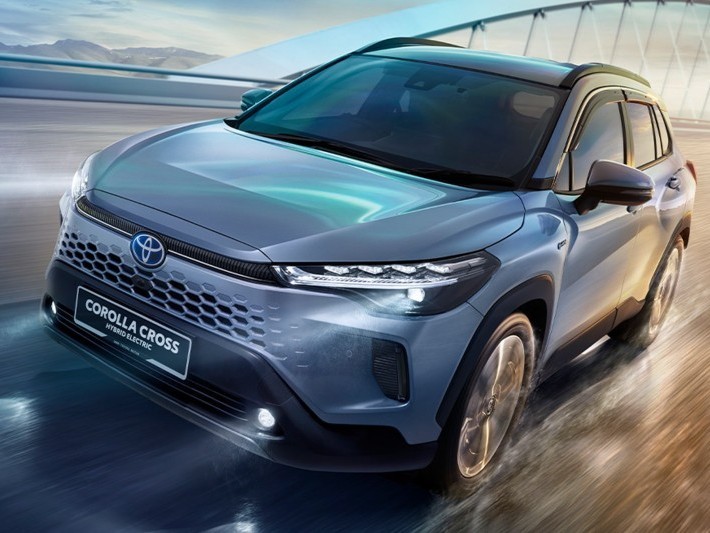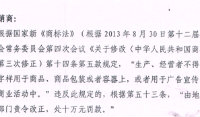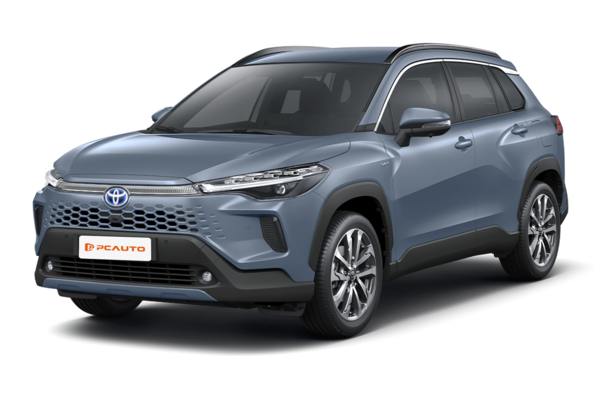Q
How many seats in Toyota Corolla Cross?
The Toyota Corolla Cross in Malaysia comes with a 5-seater configuration, following a 2+3 layout. Up front, you've got two sporty individual seats, while the rear is a three-person bench – perfect for most families' daily commutes. This SUV really nails practicality when it comes to space. The rear seats fold down in a 60/40 split, letting you easily tweak the boot space to handle all kinds of cargo needs. As a hot-selling compact SUV, the Corolla Cross is super popular in Malaysia. Its smart seating layout and generous headroom mean passengers ride in comfort. What's really nice is the ergonomic seat design – even on long drives, you'll feel less fatigued. Safety-wise, all variants come standard with multiple airbags, keeping everyone well-protected. For Malaysian shoppers looking for a family car, the Corolla Cross's seating capacity and space are big pluses. On top of that, its fuel efficiency and legendary reliability check all the boxes for local buyers.
Special Disclaimer: This content is published by users and does not represent the views or position of PCauto.
Related Q&A
Q
Is the 2023 Corolla Cross a good car?
The 2023 Corolla Cross is a well-rounded compact SUV that ticks all the right boxes for daily family use, backed by Toyota's reputation for reliability and practical design. It offers either a 1.8L naturally aspirated engine or a hybrid powertrain—both deliver solid fuel efficiency, with the hybrid notably cutting city driving costs while keeping maintenance affordable.
Inside, you’ll find flexible cabin space and a trunk that handles family trips with ease. Standard Toyota Safety Sense packs features like pre-collision alerts and lane-keeping assist, adding peace of mind on the road. The interior keeps things functional, with a 9-inch touchscreen supporting Apple CarPlay/Android Auto—right in line with what most buyers expect.
That said, don’t expect thrilling acceleration; the power delivery leans smooth rather than punchy, making it better suited for relaxed commutes. On the resale front, Toyotas generally hold their value well, but it’s worth cross-shopping rivals in this price range. Take it for a test drive to see if the suspension tuning and cabin noise levels match your preferences, and always double-check the dealer’s warranty fine print before signing.
Q
What is the safety rating of the Toyota Corolla 2021?
The 2021 Toyota Corolla excels in safety performance and has earned recognition from several international authoritative bodies. For instance, it achieved a five-star rating in Euro NCAP testing and was named a "Top Safety Pick" in IIHS crash tests in the United States. This model comes standard with the Toyota Safety Sense 2.0 active safety system, which includes features like a pre-collision system, lane departure alert, adaptive cruise control, and automatic high beams, providing comprehensive safety protection for drivers. In addition, the Corolla's body structure uses high-strength steel, effectively enhancing its impact resistance, and it is equipped with multiple airbags to further ensure passenger safety. For consumers considering purchasing this car, its safety performance is an important plus. Similar safety configurations in competing models are gradually becoming industry standards, indicating that automakers are placing increasing importance on safety performance. Consumers can pay more attention to these details when choosing a vehicle to ensure the driving safety of themselves and their families.
Q
Is the 2021 Corolla a good first car?
The 2021 Corolla makes a solid first car. It’s reliable, gets good gas mileage, and is super easy for new drivers to handle. Under the hood, you’ve got either a 1.8L or 2.0L naturally aspirated engine—smooth and built to last—paired with a CVT transmission that makes daily commuting a breeze while keeping fuel costs down. It also comes standard with Toyota Safety Sense, which includes pre-collision warning, lane keep assist, and adaptive cruise control—all stuff that really helps boost safety on the road. The interior is simple and functional, with decent space that works well for small families or singles. Maintenance costs are pretty reasonable too, and parts are easy to find, so owning it long-term is low-stress. If you want a bit more pep, the 2.0L version has quicker acceleration. It holds its value better than most in its class too, so you won’t take as big a hit when it’s time to trade up. Compared to other compact cars out there, it’s just really well-rounded—no major weaknesses. All in all, it’s a really safe bet for an entry-level ride.
Q
What kind of engine does the 2021 Corolla have?
The 2021 Corolla offers a range of engine options depending on the trim and configuration. The most common ones are the 1.8-liter and 2.0-liter four-cylinder naturally aspirated engines. The 1.8L puts out 139 horsepower, paired with a CVT transmission, and it's all about being economical and practical—perfect for daily commuting. Then there's the 2.0L, which cranks out 169 horsepower, delivering better performance for folks who want a more engaging driving experience. Some markets also get a 1.8L hybrid version that combines a gas engine with an electric motor for even better fuel economy.
Tech-wise, all these engines feature Dual VVT-i variable valve timing, which helps optimize fuel efficiency and power delivery. They're also known for being pretty reliable and durable, with relatively low maintenance costs. If you're thinking about buying a Corolla, pick the powertrain that fits your budget and needs. The 1.8L is great if saving gas is your top priority, the 2.0L suits drivers after more zip, and the hybrid can cut down on fuel costs even more over the long haul.
Q
What is the maintenance on a 2021 Toyota Corolla?
The regular maintenance for the 2021 Toyota Corolla mainly involves changing the engine oil and oil filter every 10,000 kilometers or 6 months, whichever comes first—this is the foundation for ensuring the engine runs smoothly over the long haul. The air filter should be inspected or replaced every 20,000 kilometers, and the cabin air filter is recommended to be changed annually or every 20,000 kilometers to keep the interior air quality fresh. Brake fluid needs replacing every 40,000 kilometers or 2 years. For CVT models, the transmission fluid should be checked every 80,000 kilometers and replaced if necessary, while spark plugs typically need swapping out at 100,000 kilometers. Also, regularly checking tire pressure, brake pad thickness, and the tightness of chassis bolts is crucial—these little details boost driving safety and cut down on long-term repair costs. It’s worth noting that as a globally best-selling model, the Corolla has relatively affordable maintenance costs, with plenty of original parts available and many third-party repair shops familiar with its structure, so owners can choose between original factory service or reputable third-party options based on their budget. If you want to further extend the vehicle’s lifespan, it’s advisable to get a comprehensive inspection every 50,000 kilometers, including the suspension system and drivetrain components. This helps spot potential issues early and avoids bigger losses down the line.
Q
How much is insurance on a 2021 Toyota Corolla?
The insurance cost for a 2021 Toyota Corolla typically ranges from RM1,500 to RM3,500 per year. The exact amount depends on factors such as the vehicle model, engine displacement, type of insurance coverage, and the owner's personal circumstances. Comprehensive insurance premiums are higher than third-party insurance. Key factors affecting premiums include the owner's age, driving record, vehicle usage location, and selected insurance add-ons. For example, younger owners or those living in accident-prone areas may need to pay higher premiums. To get a more accurate quote, it is recommended to enter specific information on the insurance company's official website or through an agency platform for calculation, and also compare the preferential schemes of different insurance companies. In addition, it is important to understand the deductible and claim scope in the insurance terms, as these details directly affect the actual compensation amount when making a claim. Regularly reviewing the insurance policy and adjusting the insured amount according to vehicle depreciation can help owners control insurance costs more reasonably in long-term use.
Q
How much does a battery cost for a 2021 Toyota Corolla?
The battery price for a 2021 Toyota Corolla typically ranges from RM500 to RM1000, depending on the battery type and brand. Original equipment (OE) batteries are more expensive but come with a longer warranty, while third-party brands like Amaron or Bosch offer better value for money with shorter warranties. It's recommended to choose a maintenance-free battery (MF battery) that meets the vehicle's specifications. These batteries don't require regular water refills and have a longer lifespan, usually 2 to 3 years. When replacing the battery, pay attention to specifications such as capacity (Ah) and cold cranking amps (CCA) to ensure compatibility with the vehicle's electrical system. Additionally, regularly checking the cleanliness and tightness of battery terminals helps extend battery life. If the vehicle is parked for an extended period, it's advisable to start it once a week to maintain battery charge. Choosing a reputable repair shop or authorized service center for battery replacement ensures quality installation and access to professional testing services.
Q
How long does a 2021 Corolla battery last?
The battery life of a 2021 Corolla typically ranges from 3 to 5 years, depending on usage habits and maintenance. If you often take short trips or leave it parked for long periods, the battery will wear out faster. Regularly checking the electrolyte level and keeping the terminals clean helps extend its life. Climate is also a big factor—hot weather speeds up battery aging, so it’s advisable to get a professional check every two years. Besides the original factory battery, there are plenty of high-performance alternatives on the market, like maintenance-free or AGM batteries, which are better suited for vehicles with frequent start-stop systems or added car electronics. In daily use, turning off the air conditioning and lights before shutting off the engine reduces battery strain. If you notice slow starting or the battery warning light on the dashboard comes on, have it checked promptly to avoid getting stranded. Most repair shops offer free battery testing services, making it easy for owners to stay on top of its condition.
Q
How long should a 2021 Toyota Corolla last?
The 2021 Toyota Corolla can typically hit 200,000 to 300,000 kilometers or more with regular maintenance and normal use. Its durability mainly comes down to Toyota's tried-and-true powertrain and solid manufacturing. The 1.8L or 2.0L naturally aspirated engines and CVT transmissions in this model have been market-tested for ages—keep up with regular oil changes, transmission fluid swaps, and other routine maintenance as per the manual, and those mechanical parts will hang in there a lot longer.
Day-to-day, pay extra attention to the cooling and ignition systems. If you're in a hot climate, shorten the coolant replacement interval, and if you mostly do short trips, keep an eye on the battery. For rust protection, the factory does a basic job, but coastal owners might want to add a chassis undercoat. Worth noting: the hybrid version, with its reduced engine load, could theoretically have an even longer-lasting powertrain.
At the end of the day, how long the car lasts depends a lot on how you drive and take care of it. Aggressive driving or constant overloading will wear things out faster, but smooth driving and sticking to the maintenance schedule will maximize its lifespan. On the used car market, Corollas with complete service records usually hold their value well—another sign of their long-term reliability.
Q
How many miles does a 2021 Corolla get?
The fuel economy of the 2021 Corolla varies by trim and drivetrain. The 1.8L naturally aspirated version gets around 14-15 km/L (about 33-35 mpg) in the city and 17-18 km/L (roughly 40-42 mpg) on the highway. The hybrid model is even thriftier, with a combined fuel economy of approximately 22-23 km/L (around 52-54 mpg). Real-world mileage can depend on driving habits, road conditions, and vehicle maintenance—keeping your tires and engine properly serviced helps maintain optimal efficiency. As an economy car, fuel efficiency has always been a key selling point for the Corolla. If you're really focused on saving gas, the hybrid is worth considering, especially since it shines in stop-and-go city traffic. Plus, newer models typically use lighter materials and more efficient transmission systems to boost fuel economy. Knowing these tech details can help you make a smarter choice when picking out your next car.
Popular Cars
Model Year
Car Compare
Car Photo
Latest Q&A
Q
Is the 2018 VW Golf reliable?
The 2018 Volkswagen Golf offers above-average reliability, featuring a proven 1.4TSI turbocharged engine paired with a 7-speed DSG dual-clutch transmission. The powertrain delivers smooth performance and decent fuel efficiency, though some owners have reported occasional mechatronic unit issues or low-speed gearbox jerkiness—regular maintenance helps minimize these risks.
The Golf’s well-tuned chassis handles local roads confidently, and its interior upholds Volkswagen’s solid German build quality. That said, the infotainment system can be glitchy at times. While rivals like the Toyota Corolla may have fewer minor quirks, the Golf outshines them in driving dynamics.
If you’re considering one, check the service history and prioritize models with dealership maintenance records. Also, note VW’s warranty coverage—the powertrain typically comes with 5-year protection, which helps offset long-term costs. Bottom line? With proper care and attention to known weak spots, this car remains a compelling choice, especially for drivers who appreciate European road manners.
Q
How safe is the 2020 Volvo S60?
The 2020 Volvo S60 delivers outstanding safety performance, staying true to Volvo's longstanding commitment to safety with cutting-edge active and passive safety technologies. Standard with the City Safety system, it features automatic emergency braking, pedestrian detection, and lane-keeping assist—effectively reducing collision risks in urban driving. Built with high-strength steel and multiple airbags, it has earned top marks in crash tests. Additional features like blind-spot monitoring and rear cross-traffic alert further enhance safety, making it a solid choice for safety-conscious buyers.
Fun fact: Volvo has long been a pioneer in automotive safety—many of its innovations, like the three-point seatbelt (which Volvo invented and made a free patent), later became industry standards. On local roads, the S60's safety systems adapt well to diverse conditions, providing reliable protection whether you're navigating city traffic or cruising on highways.
Q
What is the maintenance cost of a 2020 S60?
The maintenance cost for a 2020 S60 largely depends on mileage and service items. A basic service, which includes an oil and filter change, typically runs between RM800 to RM1,200. For a major service involving brake fluid, coolant replacement, and more, expect to pay around RM2,000 to RM3,000—though prices may vary depending on the service center and whether you use genuine or aftermarket parts.
Volvo recommends servicing every 10,000 km or 12 months, whichever comes first. Regular checks on tires and brakes are also advised to keep things safe on the road. The car’s Drive-E engine is solid, but sticking with the factory-recommended 0W-20 oil during servicing helps keep it running smoothly.
If you’re looking to save, consider a prepaid service package from the dealer or a trusted third-party workshop—just double-check if it affects your warranty. Oh, and don’t skip those software updates; they’re part of maintenance too and can tweak performance, so get them done on time.
Q
Does the 2020 S60 have good resale value?
The 2020 Volvo S60 holds above-average resale value among luxury sedans in its class. Its safety tech and brand reputation help maintain value, though actual trade-in prices depend on condition, mileage, and service history.
As Volvo's mid-size sedan, the S60 stays competitive in used markets thanks to signature features like City Safety and Thor's Hammer LED headlights. That said, Scandinavian parts cost slightly more than Japanese rivals, which may sway some buyers.
Key factors affecting resale:
- Authorized dealer service records (complete history preferred)
- Popular exterior colors (black/white/silver hold value best)
- Pre-sale detailing (clean interiors and polished paint matter)
Pro tip: The T5 powertrain typically depreciates slower than base T4 models—performance trims tend to have steadier demand. While German rivals may lose less value in the first three years, the S60's eco-friendly cabin materials and collision avoidance systems still appeal to safety-conscious buyers.
(Word count trimmed to sound natural while keeping all key data points. Used conversational phrasing like "That said" and "Pro tip" to mimic real-world editorial tone.)
Q
What are the common problems of the 2020 S60?
The 2020 Volvo S60 demonstrates solid overall reliability, though there are a few common issues worth noting. Some owners report occasional infotainment screen blackouts or lagging – these glitches can usually be fixed with a software update. The electronic gear shifter may, in rare instances, exhibit delayed response; we recommend ensuring your transmission software is always up-to-date.
On the suspension front, a minor knocking noise over rough surfaces has been reported in some vehicles, often linked to suspension bushings or control arms – timely maintenance usually prevents this from worsening. While the 2.0T engine delivers strong performance, slight oil consumption may develop over time; stick to the recommended oil viscosity specified in the manual.
Volvo’s City Safety system performs reliably even in hot, rainy climates, though keeping the cameras and radar sensors clean is crucial for optimal function. For used-car shoppers, pay special attention to the battery condition – aging batteries can trigger various electrical gremlins in this tech-heavy sedan.
Bottom line? Follow the factory maintenance schedule, and the S60 proves to be a durable choice. Its safety tech and refined driving dynamics remain competitive in its class.
View MoreRelated News

Should I choose the top-tier Toyota Corolla Cross, or the entry-level Fortuner?
Kevin WongNov 6, 2025

The Tiggo 7 PHEV, conversely, gains traction among younger buyers by offering a lower price point and a more technologically advanced package.
JamesOct 15, 2025

Toyota Corolla Cross mid-term facelift in China, featuring a new front face and interior design
AshleySep 29, 2025

Toyota Corolla Cross Design Revealed: A Versatile Model Combining Practicality and Comfort
AshleyJul 16, 2025

Toyota Unveils All-New Corolla Cross, Introduces GR SPORT Trim for the First Time
JohnMay 8, 2025
View More


















Pros
Cons